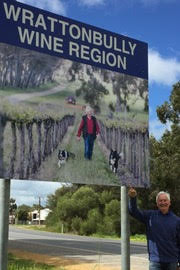Meet the EcoGrowers
Peter FreckletonRegion: Wrattonbully
1. Tell us about your experience in grape growing?
I established a vineyard on my property (previously used to grow prime lambs) in 1996, a time when many other people were becoming involved in grape growing. To learn more about the industry I got a job at Yalumba across the road. My intention was to work there for a short time, however 13 years later I finished up as LSC Manager. 2. What prompted you to want to be involved in the EcoVineyards project? I had been thinking for some time about trying to get better fences around our caves and to encourage more bats to move into our area. The EcoVineyards project provided a good opportunity to plant suitable trees to establish a more bat friendly habitat. 3. What do you hope to achieve from your involvement in the EcoVineyards project? To increase the numbers and species of bats in our area. The aim is for bats to feed on pest insects in the vineyard thereby reducing our need for pesticides. 4. Have you tried to increase biodiversity on your property before undertaking this project? If so, how? For many years I have planted large sections of shrubs and trees using local species, mostly as windbreaks and as bird corridors. I have also introduced plume moths to try to control horehound, to limit the use of chemicals. 5. Why do you think it is so important for growers to try and build natural resilience on their property? I feel it is important to contribute to the development of biodiversity in our region as well as to reduce our reliance on chemicals. Due to their insect diet, bats are sensitive to organochlorine and organophosphate pesticides. 6. Looking to the future, what do you see as a new 'normal' for grape growers on their properties? Our chemical usage will continue to be scrutinised, so we must endeavour to find alternatives. Trying to find a balance in every aspect of grape growing will be increasingly important moving forward. |
Project Partners
This project is supported by the Department of Agriculture and Water Resources, through funding from Australian Government's National Landcare Program.
This project is funded by the Adelaide and Mount Lofty Ranges Natural Resources Management Board through the NRM levy.
This project is funded by the Adelaide and Mount Lofty Ranges Natural Resources Management Board through the NRM levy.






